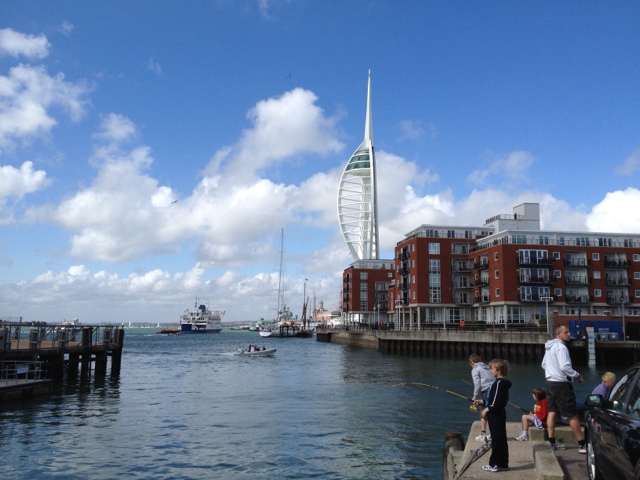Being out at sea has made updating this blog a challenge! The good old iPhone notepad to the rescue! Here's a summary of my Level 1 & 2 training:
Blog notes:
Day 1: safety check, boat systems (engine, generator, water maker, galley stove & sinks, heads, nav stations & circuit breakers, lighting)
Day 2: 6am shower, 7am breakfast of porridge with brown sugar, banana & black tea. Safety flares, engine checks: water-raw&coolant; oil-engine, gearbox, fuel, belts, bilges, leaks & electrics.
Day 3-5: Passage to French coast...Normandy and further south. Moderate seas...hot galley & diesel odor = sea sick crew.
Day 6: Race Finland from French coast to Cowes. Great marina with 5 star showers!
Day 7: More maneuvers and return to Portsmouth.
Day 8: Hit level 2 hard. Sail changes all day! Crew exhausted. Stir fry veggies & beef for dinner. Delicious.
Day 9: More maneuvers, but fewer sail changes. Perfect sailing day! Launched a huge new sail we will be using on the Clipper 70ft boats: The Asymmetric. This sail is monstrous in size! Due to the unpredictable winds it was challenging to sail, but definitely increased our downwind speeds.
Day 10 - 12: Passage to Irish Sea. Sudden Force 7- 8 gale storm caused moderate to heavy seas. Needle fish landed on deck! Cut south through the shipping channel to French coast to dodge the storm. Visibility at one point reduced to 3 boat lengths! Seas eased and sun came out around noon & returned to the UK coast. Set anchor in Brixham harbor. What a beautiful seaside British town. A former fishing town. Google it! Very heavy winds while entering harbor. Shelter from the bay is nice! Delicious pasta dinner!
Day 13 & 14: Tacked back and forth through the Enlish Channel to the French coast and back. In total we sailed over 700 miles this week and encountered the full spectrum of sailing conditions: sunny, cloudy, drizzly, stormy, cold, hot, & comfortable temps that were just right!
In summary: UK weather is psychotic! You never know what kind if weather will blow over from Nova Scotia :-o) No better place to learn to sail! All in all over 2 weeks we sailed over 1000 miles!
Made a lot of good sailing & exploring friends. Level 2 skipper Jim Dobie & 1st Mate Darren Ladd were exceptional instructors for our crew. We could not have asked for two better individuals.
Below are a few pics. Will add more in the coming days & weeks as I get time.

Ahhhh...a bit of a nap. A crew does need to rest after working hard hauling & launching sails!!!
What a great Clipper Level 2 crew!!!
Row 1: Jim, Fran, Sharron, Chris
Row 2: James, Jean, Darren (1st Mate), Kym (yes we see your face), Liz, Wes, Peter
Row 3: Kris, Joseph
Our Level 2 skipper: Jim Dobie (Sharron at helm, Kym in foreground)
Meet Larry, the new man over board (MOB) dummy for Clipper training. We saved his sorry butt a few times. Toss him in the water and he gets really heavy. He also doesn't like to move his arms to wear the rescue sling!
Launching the massive "assymetric" sail. What a monstrous beast of a sail. It will help Clipper yachts achieve improved speeds in lighter winds.
I do believe that's Fran at the helm! 1st Mate Darren Ladd looking over. Level 2 crew chilling out in some beautiful weather (for a change). The English Channel presented us with a variety of sailing conditions. My fellow British sailors called the weather the usual "psychotic" UK stuff they're used to.
 |
| Me on the aft deck enjoying a bit of sun. |
A man and the sea. All hair-dos on board morph into Donald Trump wigs when the ocean spray has its way :)
The beautiful Brixham harbor. We anchored here after dodging a storm with strong winds & rain.
Fran saved my scalp! After seeking shelter in Brixham harbor, she broke out a bottle of salt water shampoo! Just wet your hair in the sea, shampoo & rinse! My scalp felt like a million $ after that!
It's a mast. No. It's Kris Slezak of Poland. He towered over our entire crew at 6ft 6in. Need to release a hailyard at 10ft or haul up a sail in 2 minutes? Kris is your man!




























